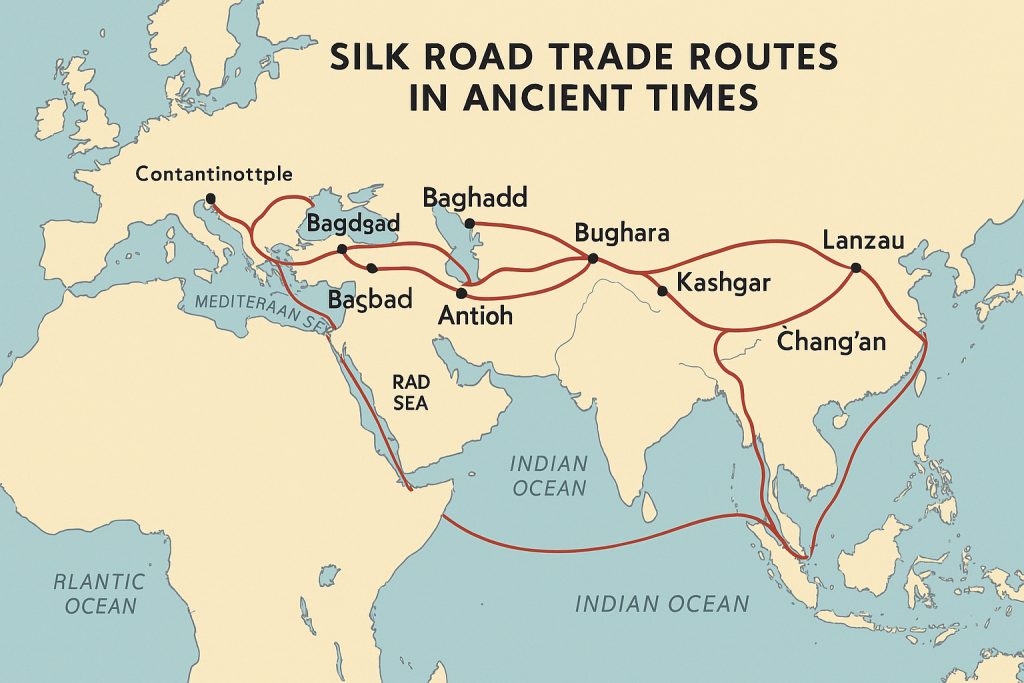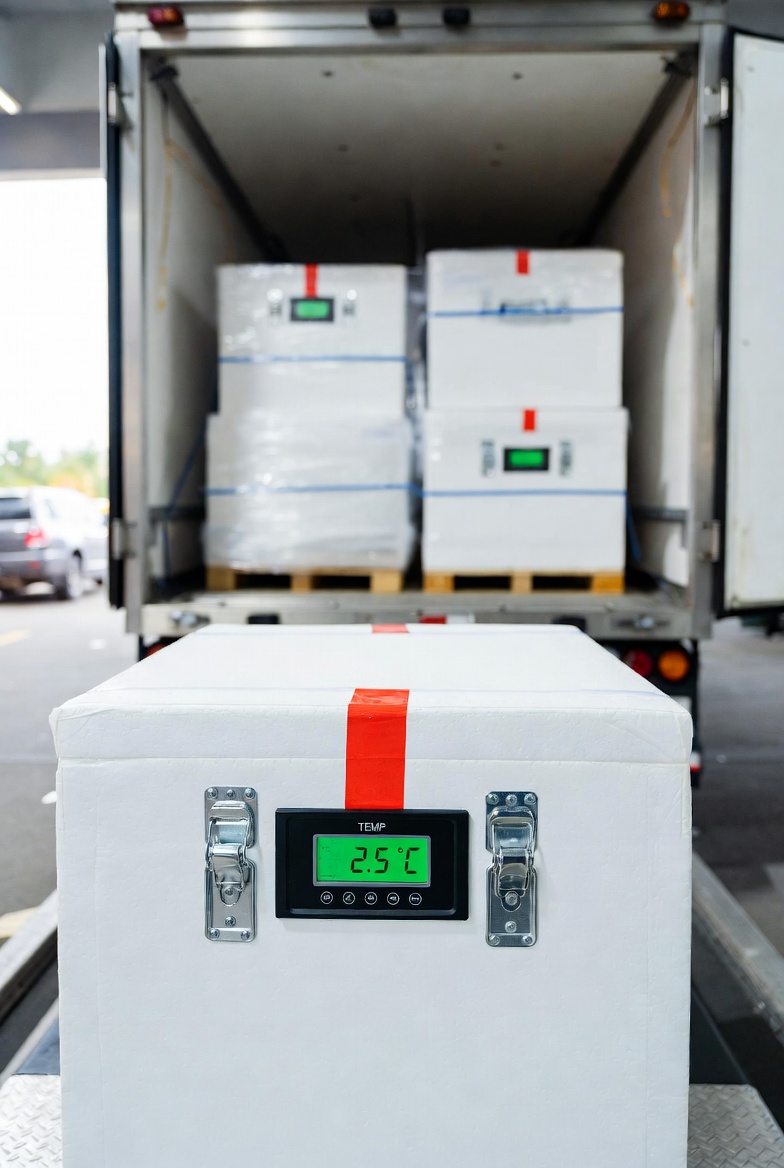The Silk Road was an extensive network of trade routes that connected the East and West for centuries, especially flourishing between the 2nd century BCE and the 14th century CE. It wasn’t a single road, but rather a series of interconnected land and sea routes used for trade, cultural exchange, and diplomacy.
1. Land Routes (Overland Silk Road)
These routes primarily connected China to the Mediterranean through Central Asia, the Middle East, and Eastern Europe.
- Eastern Route:
- Started in Chang’an (modern Xi’an, China)
- Passed through Lanzhou, Dunhuang
- Split into:
- Northern Route (via Turpan, Urumqi, and through Central Asia)
- Southern Route (via the edge of the Taklamakan Desert)
- Rejoined near Kashgar
- Central Asian Route:
- From Kashgar through Samarkand, Bukhara, Merv (present-day Uzbekistan and Turkmenistan)
- Continued to Persia (Iran) and the Middle East
- Western Route:
- From Baghdad to Antioch and Constantinople (modern Istanbul)
- Eventually reached the Mediterranean, then Europe
2. Maritime Routes (Sea Silk Road)
These linked China to Southeast Asia, South Asia, Arabia, and East Africa.
- Chinese ports like Guangzhou and Quanzhou
- Passed through the South China Sea to:
- Malacca Strait
- India (Calicut, Gujarat)
- Arabian Peninsula (Oman, Yemen)
- Red Sea to Alexandria, or around to East Africa
What Was Traded?
- From East to West:
- Silk, porcelain, tea, paper, spices, jade, gunpowder
- From West to East:
- Glassware, gold, silver, wool, horses, wine, olive oil, precious stones




